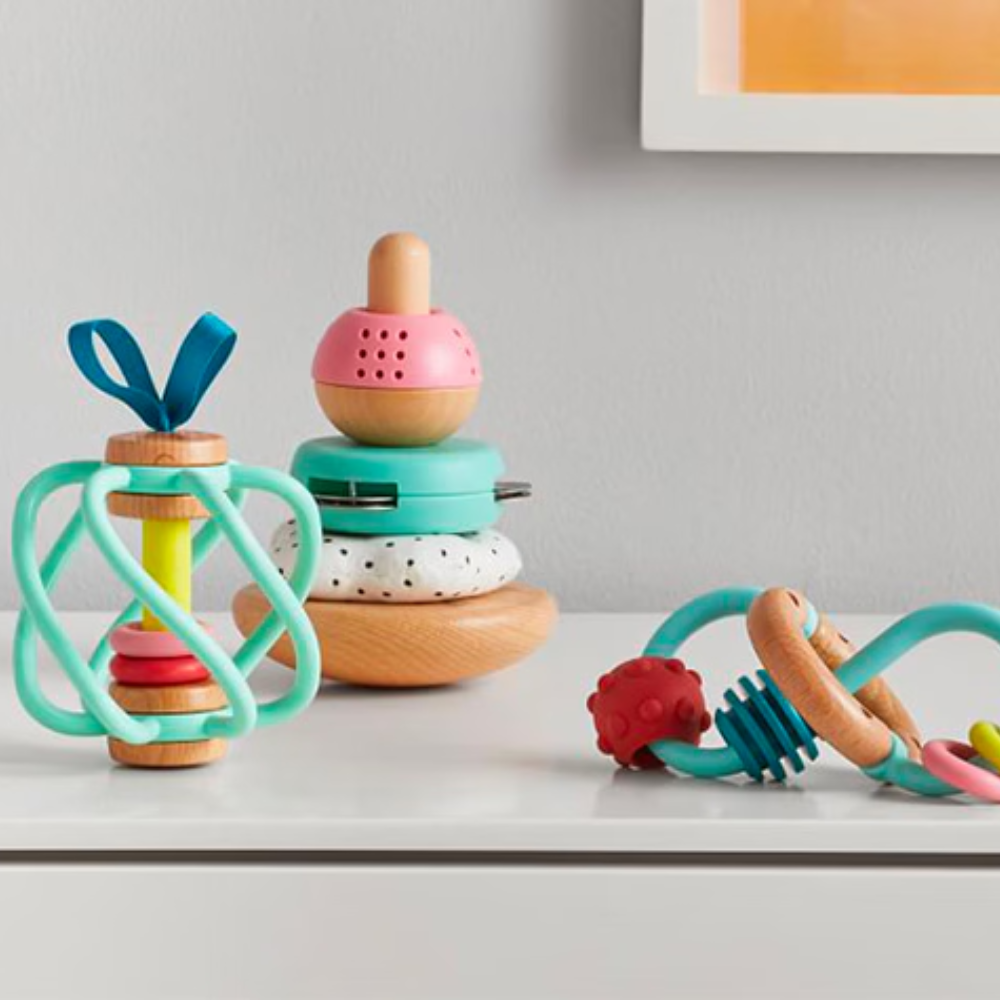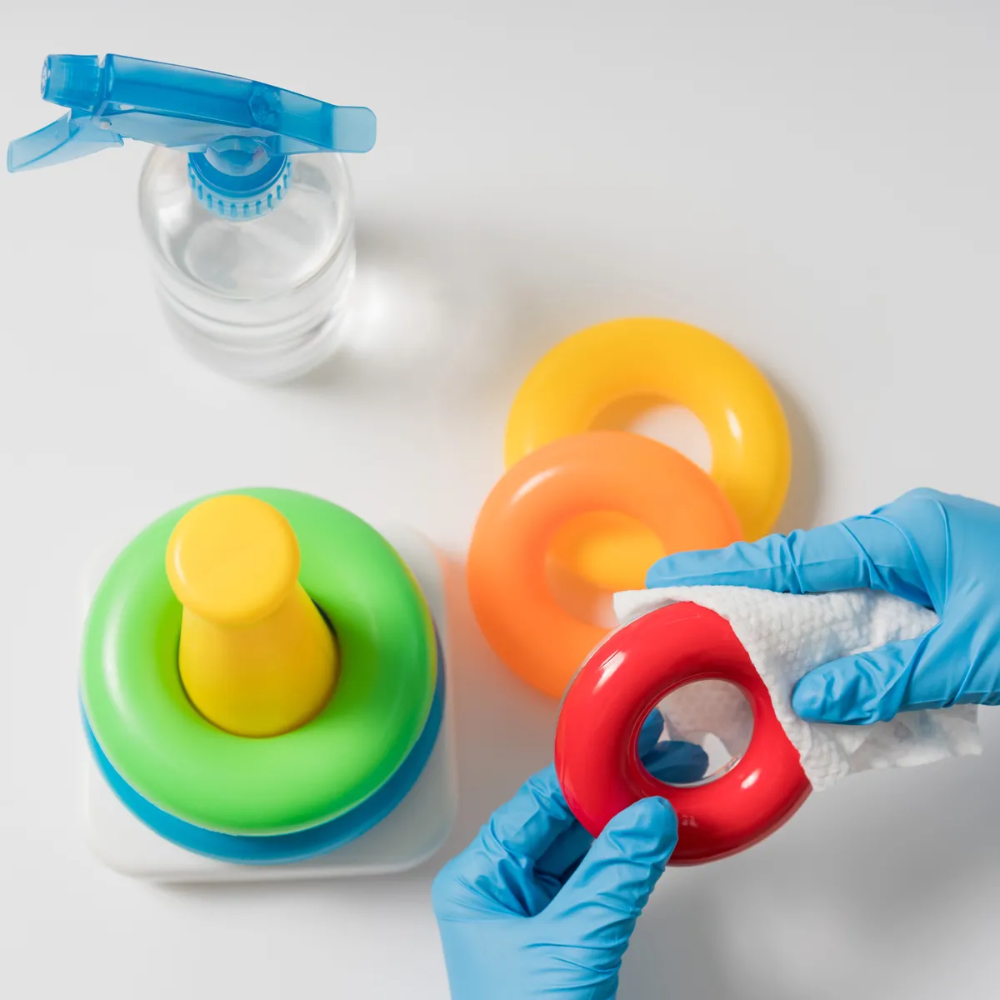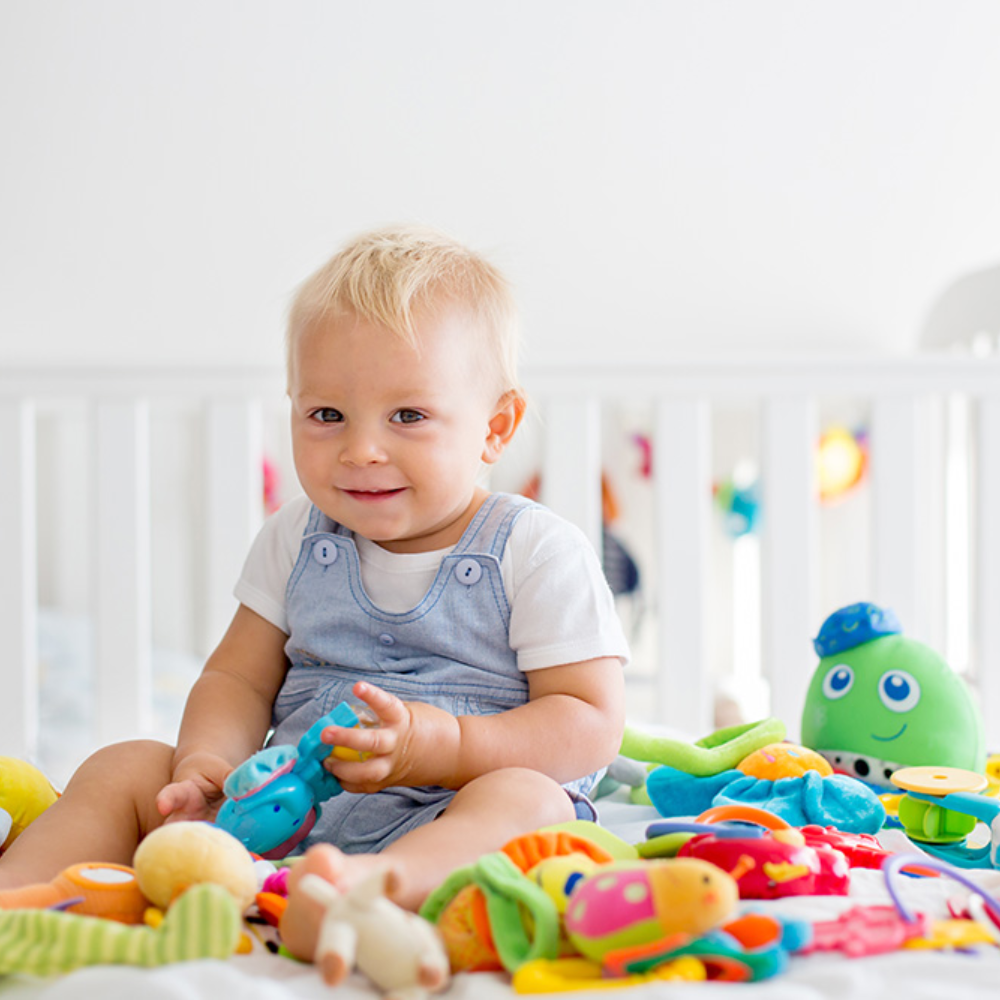Cleaning and disinfecting baby toys is an essential part of keeping your little one healthy and safe. However, some baby toys are not suitable for traditional washing methods due to their delicate materials or electronic components.
So, what can you do when your child's favorite toys need a good cleaning but can't be thrown in the washing machine?
In this guide, we will discuss how to clean and disinfect baby toys that cannot be washed using water or detergent. From plush toys to electronics, we've got you covered with easy and effective cleaning methods that will help keep your little one's toys germ-free without causing any damage.
Why It's Important To Clean Baby Toys

As parents, we all want to protect our children from harmful bacteria and viruses. Babies are especially vulnerable to these germs as their immune systems are still developing.
Their toys, which they often put in their mouths, can harbor a variety of bacteria and viruses that can make them sick. This is why it's crucial to regularly clean and disinfect your baby's toys.
Moreover, unclean toys can also lead to the spread of illnesses among siblings or playmates. Plus, dirty toys can collect dust and other allergens, which can trigger allergies or asthma in young children.
Besides the health benefits, cleaning your child's toys also helps prolong their lifespan. Regularly removing dirt and grime can prevent the wear and tear of materials, keeping them in good condition for longer.
Steps To Clean Baby Toys That Can't Be Washed

There are several methods you can use to clean baby toys that cannot be washed with water or detergent. Here are the steps to follow for each one:
Spot Cleaning
Spot cleaning is an effective method for tackling dirt and stains on baby toys that can't be fully washed. To begin, gather a clean, damp cloth and a mild detergent or baby-safe cleaner. Dampen the cloth with the solution, ensuring it is not soaking wet, as excessive moisture can damage sensitive materials.
Gently rub the stained areas, paying attention to intricate parts where dirt may accumulate. For tougher stains, let the cleaner sit for a few minutes before wiping it away.
After cleaning, use a separate dry cloth to remove any leftover moisture and avoid mildew growth. This method is ideal for refreshing toys that show signs of wear but require special care, ensuring they remain safe and hygienic for your little one.
Disinfecting Wipes
Disinfecting wipes are a convenient and quick option for cleaning baby toys that cannot be washed. These wipes contain antibacterial agents that effectively kill germs and viruses without the need for water or additional cleaning products.
To use, simply wipe down the toy with the disinfecting wipe, ensuring all surfaces are covered. Pay extra attention to areas that your child may frequently touch or put in their mouth. After wiping, let the toy air dry before giving it back to your child.
It's important to note that not all disinfecting wipes are safe for use on baby toys. Look for ones labeled as "safe for children" or made specifically for cleaning toys to ensure the ingredients are non-toxic and won't harm your child.
Vinegar Solution
Vinegar is a natural disinfectant that can be used to clean and sanitize baby toys without causing any damage. To make a vinegar solution, mix equal parts of water and white vinegar in a spray bottle.
Spray the solution onto the toy, focusing on areas that need special attention. Let it sit for a few minutes before wiping it off with a clean, damp cloth. The acidic properties of vinegar help kill bacteria and remove dirt without leaving behind any harsh chemical residue.
After cleaning, allow the toy to air dry completely before giving it back to your child. The vinegar smell will dissipate as the toy dries.
Baking Soda Paste
For tough stains or dirt buildup on baby toys, a baking soda paste can be a gentle yet effective cleaning solution. Combine equal parts of baking soda and water to create a thick paste.
Using a clean cloth or toothbrush, apply the paste onto the affected areas and gently scrub in circular motions. Let it sit for a few minutes before wiping it off with a damp cloth.
The mild abrasive properties of baking soda help remove stubborn stains without causing damage to delicate materials. After cleaning, rinse the toy thoroughly with water and let it air dry completely before giving it back to your child.
So these are the simple and effective methods for cleaning baby toys that cannot be washed. By regularly incorporating these techniques into your cleaning routine, you can ensure your child's toys stay germ-free and safe for playtime. Remember to always follow proper safety precautions, such as wearing gloves and avoiding harsh chemical cleaners, when cleaning your child's toys.
How To Choose The Best Baby Toys

Aside from regular cleaning, it's also essential to choose the right toys for your little one. When buying baby toys, consider the following tips:
- Look for non-toxic materials: Babies put everything in their mouths, so it's crucial to choose toys made from safe and non-toxic materials. Avoid plastic toys containing PVC, BPA, or phthalates.
- Consider the age-appropriateness: Make sure the toy is suitable for your child's age and developmental stage. Toys with small parts can be choking hazards for young children.
- Check for durability: Babies can be rough on their toys, so it's best to choose ones made from sturdy materials that can withstand wear and tear.
- Select educational toys: Toys that promote learning and development are great choices for babies. Look for toys that encourage sensory exploration, problem-solving, and creativity.
- Avoid loud or flashing toys: Too much noise or bright lights can overstimulate and overwhelm young children. Opt for toys with softer sounds and gentle colors.
- Read reviews and safety ratings: Before purchasing a toy, do some research on its safety record and read reviews from other parents to ensure it's a good choice for your child.
Remember, toys are not just for entertainment but also play a crucial role in your child's development. By choosing the right toys and keeping them clean, you can create an enjoyable and safe play environment for your little one.
FAQs
How can I clean stuffed animals that can't be washed?
To clean stuffed animals that can't be washed, you can spot clean them with a damp cloth and mild soap. For tougher stains, use a mixture of water and a small amount of detergent. After cleaning, allow the beloved stuffed animal to air dry completely. You can also use a hair dryer on a low setting to speed up the drying process.
How do I clean plastic baby toys that can't be submerged in water?
For plastic baby toys that can't be submerged, use disinfectant wipes or a cloth dampened with hot water and mild soap to wipe them down. Ensure you clean all surfaces thoroughly, especially areas that may come into contact with your baby's mouth. Let the clean plastic toys air dry or use a hair dryer on a low setting to dry them quickly.
What's the best way to clean wooden baby toys?
Wooden baby toys can be cleaned by wiping them with a cloth dampened with a solution of water and vinegar. Avoid soaking the wooden toys or using harsh chemicals, as this can damage the wood. After cleaning, allow the toys to air dry completely before giving them back to your baby.
How should I clean baby bath toys that can't be submerged?
For baby bath toys that can't be submerged, wipe them down with a cloth or disinfectant wipes. Focus on areas that may come into contact with your baby's mouth. If the bath toys are plastic, you can use a solution of hot water and mild soap, ensuring they air dry thoroughly before the next use.
Can I use a hair dryer to dry baby toys after cleaning?
Yes, you can use a hair dryer on a low setting to dry baby toys after cleaning, especially if they can't be submerged or machine-washed. This method is useful for drying stuffed animals, wooden baby toys, and other items that need to be kept dry. Make sure the toys are completely dry before returning them to your baby.
Conclusion
By following these simple steps and tips, you can keep your baby's toys clean and safe for playtime. Remember to regularly clean and disinfect toys that cannot be washed, and choose the best toys for your child's age and developmental stage.
With proper care, your child's toys can provide endless hours of fun while promoting their learning and growth. Also, be sure to regularly check toys for any signs of wear and tear or potential hazards, and replace them as needed.
By prioritizing toy cleanliness and safety, you can create a healthy environment for your child to play and thrive in. So go ahead, and let your little ones enjoy their favorite toys without any worry! Happy cleaning!
Subscribe to our email newsletter and unlock access to members-only content and exclusive updates.

Comments